Experimental Searches for Dark Matter
- PMID: 28163635
- PMCID: PMC5253917
- DOI: 10.12942/lrr-2002-4
Experimental Searches for Dark Matter
Abstract
There is now an enormously rich variety of experimental techniques being brought to bear on experimental searches for dark matter, covering a wide range of suggested forms for it. The existence of "dark matter", in some form or other, is inferred from a number of relatively simple observations and the problem has been known for over half a century. To explain "dark matter" is one of the foremost challenges today - the answer will be of fundamental importance to cosmologists, astrophysicists, particle physicists, and general relativists. In this article, I will give a brief review of the observational evidence (concentrating on areas of current significant activity), followed by anequally brief summary of candidate solutions for the 'dark matter'. I will then discuss experimental searches, both direct and indirect. Finally, I will offer prospects for the future.
Figures






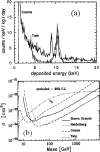
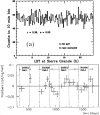


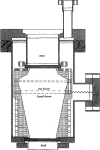


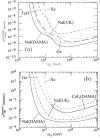
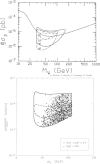
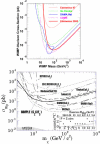
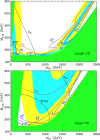
Similar articles
-
Dark-matter QCD-axion searches.Proc Natl Acad Sci U S A. 2015 Oct 6;112(40):12278-81. doi: 10.1073/pnas.1308788112. Epub 2015 Jan 12. Proc Natl Acad Sci U S A. 2015. PMID: 25583487 Free PMC article.
-
WIMP dark matter candidates and searches-current status and future prospects.Rep Prog Phys. 2018 Jun;81(6):066201. doi: 10.1088/1361-6633/aab913. Epub 2018 Mar 23. Rep Prog Phys. 2018. PMID: 29569575
-
Indirect detection of dark matter with γ rays.Proc Natl Acad Sci U S A. 2015 Oct 6;112(40):12264-71. doi: 10.1073/pnas.1308728111. Epub 2014 May 12. Proc Natl Acad Sci U S A. 2015. PMID: 24821791 Free PMC article.
-
Direct detection of dark matter-APPEC committee report.Rep Prog Phys. 2022 Apr 29;85(5). doi: 10.1088/1361-6633/ac5754. Rep Prog Phys. 2022. PMID: 35193133 Review.
-
Hunting for Dark Matter particles with new detectors.Naturwissenschaften. 2005 Mar;92(3):101-14. doi: 10.1007/s00114-004-0587-8. Naturwissenschaften. 2005. PMID: 15672271 Review.
Cited by
-
Physics, Astrophysics and Cosmology with Gravitational Waves.Living Rev Relativ. 2009;12(1):2. doi: 10.12942/lrr-2009-2. Epub 2009 Mar 4. Living Rev Relativ. 2009. PMID: 28163611 Free PMC article. Review.
-
History of Astroparticle Physics and its Components.Living Rev Relativ. 2008;11(1):2. doi: 10.12942/lrr-2008-2. Epub 2008 May 7. Living Rev Relativ. 2008. PMID: 28163605 Free PMC article. Review.
References
-
- Abriola D, Avignone DT, Brodzinski RL, Collar JI, Di Gregorio DE, Farach H, Garcia E, Gattone AO, Hasenbalg F, Huck H, Miley HS, Morales A, Morales J, Ortiz de Solorzano A, Puimedon J, Reeves JH, Saenz C, Salinas A, Sarsa ML, Tomasi D, Urteaga I, Villar JA. Search for Dark Matter Signals in the Southern Hemisphere. In: Spooner NJC, editor. Proc. of 1st Workshop on The Identification of Dark Matter. Singapore: World Scientific; 1997. pp. 403–408.
-
- Abriola D, Avignone FT, Brodzinskic RL, Collar JI, Di Gregorio DE, Farach HA, Garcia E, Gattone AO, Guerard CK, Hasenbalg F, Huck H, Miley HS, Morales A, Morales J, Ortiz de Solorzano A, Puidemon J, Reeves JH, Salinas A, Sarsa MI, Villar JA. Search for an Annual Modulation of Dark Matter Signals with a Germanium Spectrometer at the Sierra Grande Laboratory. Astropart. Phys. 1999;10:133–139. doi: 10.1016/S0927-6505(98)00047-4. - DOI
-
- Ahlen S, Balebanov VM, Battiston R, Becker U, Burger J, Capell M, Chen HF, Chen HS, Chen M, Chernoplekov N, Clare R, Dai TS, De Rujula A, Fisher P, Galaktinov N, Gougas A, Wen-Qi G, He M, Koutsenko V, Lebedev A, Li TP, Lu YS, Luckey D, Ma Y, McNeil R, Orava R, Prevsner A, Plyskine V, Rubinstein H, Sagdeev R, Salomon M, Tang HW, Ting SCC, Vetlitsky I, Wang YF, Ping-Chou X, Xu ZZ, Wefel JP, Zhang ZP, Zhou B, Zichichi A. An antimatter spectrometer in space. Nucl. Instrum. Methods. 1994;A350(1):351–367. doi: 10.1016/0168-9002(94)91184-3. - DOI
-
- Ahmad QR, SNO Collaboration et al. Measurement of the rate of νe+d→p+p+e- interactions produced by 8B solar neutrinos at the Sudbury Neutrino Observatory. Phys. Rev. Lett. 2001;87:071301-1–071301-6. - PubMed
Publication types
LinkOut - more resources
Full Text Sources
